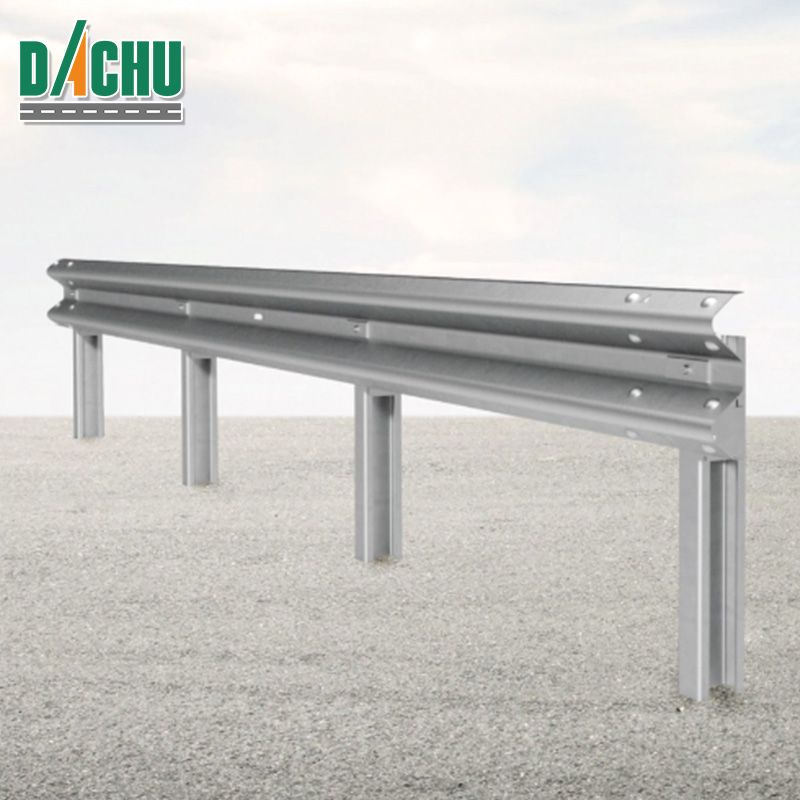Components and Structure of W Beam Guardrail
The W Beam Guardrail is composed of several key components that work together to create a sturdy and effective roadside safety barrier. Understanding the components and structure of W Beam Guardrail is essential for proper installation, maintenance, and overall performance. Let's explore these components in detail.

W-Beam:
The W-shaped steel beam is the primary component of the guardrail system. It is named after its distinctive profile, resembling the letter "W" when viewed from the side. The W-beam provides strength and rigidity to the guardrail, enabling it to absorb and redirect the energy of impacting vehicles. The beam is typically made of galvanized steel, which offers durability and corrosion resistance.
Posts:
The guardrail posts provide support and secure the W-beams in place. They are typically made of galvanized steel, wood, or a combination of both. The posts are installed at regular intervals along the roadway and are embedded into the ground or attached to a base plate. The spacing between the posts depends on various factors, including the design standards and the specific site conditions.
Splice Bolts/Connectors:
Splice bolts or connectors are used to connect adjacent W-beams to create a continuous and uninterrupted guardrail system. These specialized fasteners ensure a secure and reliable connection between the beams. The bolts or connectors are typically made of high-strength steel and are designed to withstand the forces generated during vehicle impacts.
Terminal Ends:
Terminal ends are crucial components located at the beginning and end of a guardrail system. Their purpose is to safely redirect impacting vehicles and minimize the risk of vehicle snagging or spearing through the guardrail. There are different types of terminal ends, such as impact attenuators, energy-absorbing terminals, and anchored end treatments. These terminal ends are designed to absorb and dissipate the energy of a collision, reducing the severity of the impact.
Blockouts/Spacers:
Blockouts or spacers are additional components used in the guardrail system to maintain the proper alignment and height of the W-beams. They are inserted between the W-beams and the posts, ensuring consistent spacing and positioning. Blockouts also play a role in reducing the likelihood of vehicle snagging and improving the overall performance of the guardrail system.
Hardware:
Various hardware components, such as bolts, nuts, washers, and anchors, are essential for securely fastening and assembling the guardrail system. These hardware components provide strength and stability to the guardrail, ensuring that it can withstand the forces generated during vehicle impacts. Galvanized or corrosion-resistant hardware is typically used to maintain the longevity and performance of the guardrail.
The structure of the W Beam Guardrail system is designed to provide effective containment and redirection of impacting vehicles. The W-beams are attached to the posts through the use of splice bolts or connectors, creating a continuous barrier along the roadside. The height of the W-beams, the post spacing, and the overall alignment of the guardrail are determined by specific design standards and regulations.
Proper installation and maintenance of the guardrail system are crucial to its effectiveness. The posts must be securely embedded or anchored to withstand impact forces. Regular inspections are necessary to identify and replace any damaged or worn components, ensuring the integrity and functionality of the guardrail.
In conclusion, the components and structure of a W Beam Guardrail include the W-shaped beams, posts, splice bolts/connectors, terminal ends, blockouts/spacers, and hardware. These components work together to create a robust and reliable roadside safety barrier that helps minimize the severity of collisions and provides protection to motorists and pedestrians. Understanding these components is vital for proper installation, maintenance, and adherence to design standards to ensure optimal performance of the guardrail system.

